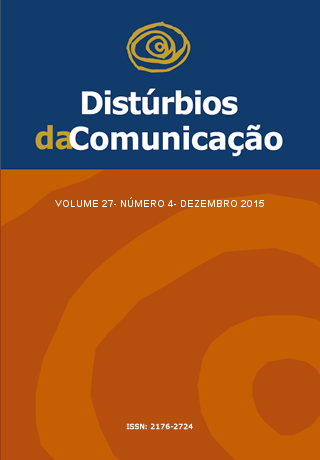Evaluation and perception of teachers on the effects of sound pressure level in the classroom
Keywords:
School Health, Noise, Noise Effects, Dysphonia.Abstract
Objective: To evaluate the sound pressure level in classrooms of public schools and perceptions of teachers about its interference with school activities and their health. Methods: A descriptive crosssectional study evaluating the noise of 14 classrooms in eight schools. An assessment of noise was made using the acoustic equivalent sound pressure level parameter. To verify the perceptions of teachers regarding noise in the classroom and its interference in school activities and their health, it applied a questionnaire to 23 teachers with questions about: a) influence of noise in school activities, b) the influence of noise in speech and communication, c) influence of noise in the body, d) influence of internal noise of school, e) influence of external noise of school. The questions obeyed Likert scale with the following answers: none, small, medium, and high. Results: The sound pressure level in the classroom ranged from 54,5 dB(A) 70,3 dB(A), with a median of 60 dB(A). Complaints related to noise greater occurrence (medium and high) were student academic performance (95.7%) and understanding of the content in the classroom (95.7%), raising the voice at work (87.0%), vocal fatigue (82.6%), irritability (82.6%) and fatigue (82.6%). The later two were most cited by teachers in the noisiest rooms (p≤0.05). The conversations in the hall were also a factor related to increased noise in class (p=0.03). Conclusion: The measured sound pressure levels are above the recommended by the standards. According to teachers, noise negatively affects the school environment and it is related to the symptoms of tiredness and irritability.Downloads
Metrics
Downloads
Published
How to Cite
Issue
Section
License
Copyright (c) 2015 Alessandra Terra Vasconcelos Rabelo, Ana Carolina Fonseca Guimarães, Rafaella Cristina Oliveira, Lygia Bueno Fragoso, Juliana Nunes Santos

This work is licensed under a Creative Commons Attribution 4.0 International License.






